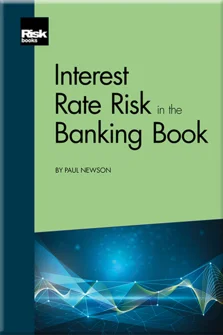Standard Metrics for Identification and Assessment of IRRBB
Introduction
An Overview of Banking
Relevant Accounting and Financial Concepts
Fundamentals of Interest Rate Risk and the Banking Book
Standard Metrics for Identification and Assessment of IRRBB
Managing and Hedging IRRBB
Interest Rate Basis Risk
Behavioural Assumptions in the Management of IRRBB
Non-dated Liabilities
Other Types of Market Risk
Reporting and the Management Process
IRRBB: Its Links to the Operating Plan and Stress Testing
Regulatory Requirements
This chapter introduces the principal methods by which IRRBB is typically measured and thus controlled by banks. These methods fall into two main families: value measures and income measures. Each will be described here in turn, together with their main strengths and weaknesses in a banking book context. It will also be shown that, in certain and very particular circumstances, they will produce equivalent results, but that these circumstances are unlikely to be found in a typical banking book. The various numerical examples have been designed to be as simple and as self-explanatory as possible, but it is assumed that the reader is fully conversant with DCF – if not, prior reference should be made to the first section of Chapter 2.
THE RE-PRICING GAP
The interest rate re-pricing gap is one of the principal tools used in the measurement of IRRBB, and is the starting point for most of the various value metrics commonly used in banks.
Basic construction
An interest rate gap report is essentially a two-dimensional grid, or matrix, at a particular date and which summarises all the current positions of the bank by: the remaining time to the their next re-pricing date (usually
Copyright Infopro Digital Limited. All rights reserved.
As outlined in our terms and conditions, https://www.infopro-digital.com/terms-and-conditions/subscriptions/ (point 2.4), printing is limited to a single copy.
If you would like to purchase additional rights please email info@risk.net
Copyright Infopro Digital Limited. All rights reserved.
You may share this content using our article tools. As outlined in our terms and conditions, https://www.infopro-digital.com/terms-and-conditions/subscriptions/ (clause 2.4), an Authorised User may only make one copy of the materials for their own personal use. You must also comply with the restrictions in clause 2.5.
If you would like to purchase additional rights please email info@risk.net











